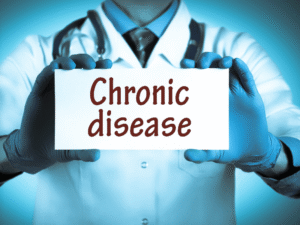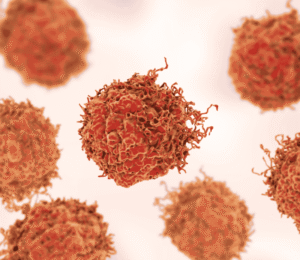Table of Contents
Chronic Deep Vein Thrombosis (DVT): Blood Clot and Vein Care
Chronic deep vein thrombosis (DVT) is a long-term medical condition characterized by a persistent blood clot in a deep vein. This clot can block blood flow in the affected area, leading to symptoms such as pain, swelling, and complications like pulmonary embolism when clots dislodge and travel to the lungs.
This condition falls under the broader category of blood clotting disorders and may be classified as either acute DVT or chronic DVT, depending on the duration and severity. Individuals with chronic DVT often experience compromised venous function, especially in the deep veins of the legs, leading to reduced circulation and increased risk of further clot development.
What Is Chronic Deep Vein Thrombosis?
Chronic DVT refers to a condition where a blood clot remains in a vein for an extended period, often following an episode of acute deep vein thrombosis. Over time, the clot becomes organized and may scar the vein, causing long-term complications like:
- Post-thrombotic syndrome
- Chronic leg swelling
- Persistent pain and discomfort
This chronic form of deep vein thrombosis disrupts blood flow, damages vein valves, and increases the risk of additional clots forming. Unlike acute DVT, chronic DVT requires continuous management of symptoms through medical intervention and lifestyle changes.
Symptoms and Causes of Chronic DVT
Common Symptoms:
- Persistent leg pain
- Swelling in the affected limb
- Skin discoloration
- Heaviness or fatigue in the leg
- Fragile, tender veins
Primary Causes and Risk Factors:
- Prolonged immobility (e.g., after surgery or long travel)
- Vein or artery injury
- Inherited clotting disorders like Factor V Leiden mutation
- Obesity and a sedentary lifestyle
- Smoking
- Hormonal therapy or contraceptives
These causes contribute to poor blood flow and increase the risk of clots forming in the vein, particularly in individuals predisposed to clotting disorders.
Anatomy of Deep Vein Thrombosis (DVT) and How It Affects Veins
Deep vein thrombosis (DVT) occurs when a blood clot forms in the deep veins, typically in the legs. These veins are located beneath the muscles and play a crucial role in returning blood from the lower body back to the heart. When a clot forms, it can disrupt normal circulation and damage the structure and function of the vein.
Here’s how DVT affects the anatomy of your veins:
Blockage of Blood Flow: The clot obstructs blood flow in the vein, leading to increased pressure and reduced oxygen delivery to surrounding tissues.
Vein Wall Damage: The clot irritates and inflames the inner lining of the vein (called the endothelium), which may result in long-term structural damage.
Valve Dysfunction: Veins contain one-way valves that help blood flow upward toward the heart. A clot can damage these valves, causing blood to pool in the legs—a condition known as chronic venous insufficiency.
Long-Term Complications: Over time, vein damage can lead to post-thrombotic syndrome (PTS), with symptoms including swelling, leg pain, skin discoloration, and a feeling of heaviness.
Risk of Pulmonary Embolism: If the clot breaks loose and travels to the lungs, it can cause a pulmonary embolism (PE)—a potentially life-threatening emergency.
Understanding Blood Clotting Disorders
Blood clotting disorders are inherited or acquired conditions that affect the body’s ability to regulate how blood clots form and dissolve. These disorders increase the likelihood of developing abnormal blood clots, especially in the veins or arteries.
Common Blood Clotting Disorders:
- Factor V Leiden mutation – increases the risk of developing blood clots.
- Prothrombin gene mutation – promotes excess blood clot formation.
- Antiphospholipid syndrome – an autoimmune condition that causes recurrent thrombosis.
Diagnosis:
These conditions are typically diagnosed using:
- D-dimer blood test
- Genetic testing panels
- Family medical history reviews
Management includes blood thinners, lifestyle changes, and continuous medical monitoring.
Diagnosis and Treatment Options for Chronic DVT
Early diagnosis and intervention are essential to prevent life-threatening complications.
Diagnostic Tools:
- D-dimer test
- Duplex ultrasound
- CT or MR venography
Treatment Options:
- Anticoagulants (blood thinners) – to prevent new clots from forming
- Compression therapy – to improve blood circulation
- Stent placement or surgical clot removal – in severe cases
- Lifestyle modifications – such as exercise, diet, and avoiding prolonged inactivity
The goal of chronic DVT treatment is to stop clot progression, improve blood flow, and reduce the risk of pulmonary embolism or further venous damage.
When to See a Doctor: Warning Signs of Worsening Clot
Seek immediate medical care if you notice:
- Sudden and intense leg pain
- Rapid swelling in the affected area
- Skin turning pale, red, or bluish
- Shortness of breath or chest pain (potential signs of pulmonary embolism)
Emergency diagnosis through imaging and blood tests is critical for initiating urgent clot treatment.
Living with Chronic DVT: How It Affects Daily Life
Chronic deep vein thrombosis can significantly impact everyday activities and overall quality of life. Individuals may experience:
- Persistent discomfort
- Reduced mobility due to fragile or sensitive veins
- Difficulty standing or sitting for extended periods
To manage symptoms:
- Engage in regular physical activity
- Use compression stockings as recommended
- Monitor with regular blood tests
- Adjust medications as needed
Managing this chronic condition requires collaboration between patients and healthcare providers to ensure ongoing symptom control and prevent complications.
Who Is Most at Risk? A Look at Demographics
Gender:
Women may be at slightly higher risk for chronic DVT due to hormonal influences, pregnancy, and contraceptive use.
Age:
Adults over 50 are more prone to DVT due to decreased vein elasticity and increased clotting factor activity.
Conclusion:
Chronic deep vein thrombosis is a serious and potentially disabling condition that demands regular medical attention. It arises from persistent blood clots in the veins and may cause long-term venous complications.
Key strategies for managing chronic DVT include:
- Early diagnosis with blood tests like the D-dimer test
- Preventive measures to reduce clot formation
- Medical management with anticoagulants
- Lifestyle changes for improved vein health
Whether you’re dealing with acute thrombosis or a chronic blood clot, a proactive approach is essential. Through timely interventions and targeted therapies, patients can significantly improve their quality of life and reduce the risk of dangerous outcomes such as pulmonary embolism.



